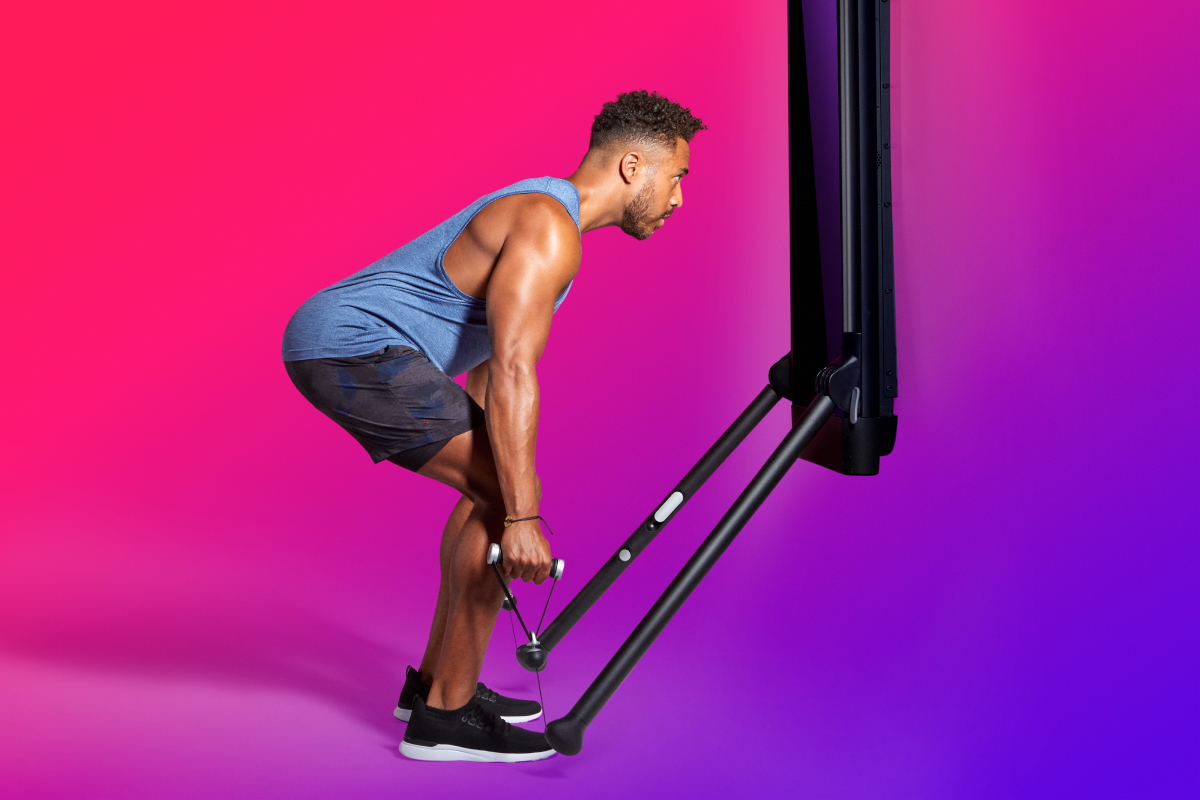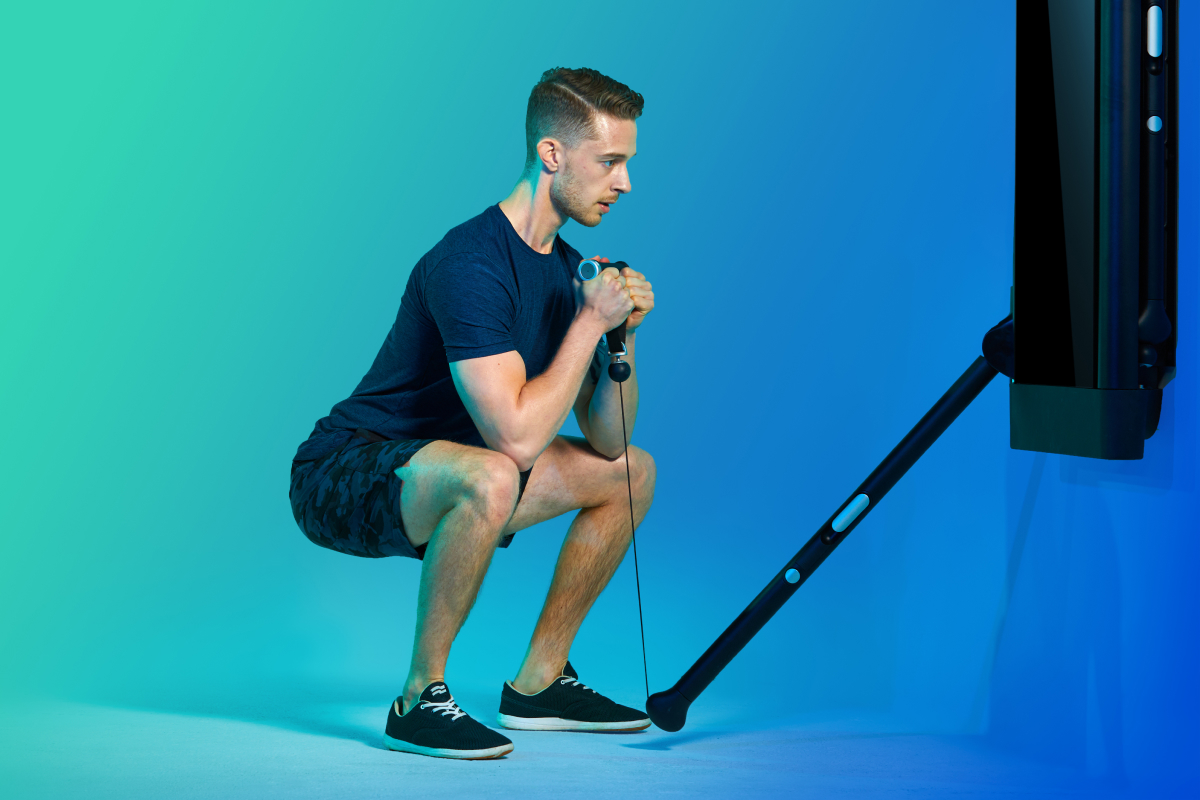These total-body strength training moves for hikers will help you crush dirt and vert on your next hike.

While so much of fitness has turned virtual over the past 18 months, there’s been one constant in the world of workout spaces: the great outdoors. In 2020, the number of hikes logged on AllTrails, the largest hiking and trail-specific navigation app, jumped 171 percent compared to 2019, and the number of individual hikers increased by 135 percent, according to an analysis by RunRepeat.
But going for a hike isn’t the same thing as taking a casual stroll. Hiking for an hour at a normal pace can be the workout equivalent of an hour of boot camp training; add an incline, a backpack, or uneven terrain, and you’ll jack up the intensity even further.
It’s a full-body workout, and that’s why “strength training in preparation for your next hike is a must,” says Tonal coach Jared Rodriguez. As you navigate hills, rocks, roots, and other obstacles, the strength training you’ve employed off the trail will help minimize aches and pains in your neck, shoulders, back, hips, quads, and your entire posterior chain, he explains. “With improved leg, core, and back strength, you’ll be able to hike harder, longer, and with a supercharged sense of adventure,” says Rodriguez.
Building a strong foundation for when you tackle the trails is crucial to happy hiking. These five hiking exercises will help you do just that.
1. Neutral Grip Deadlift

How to do it: Grab the handles and place your feet hip-width apart, laces lined up with the end of Tonal’s arms. With your arms down by sides and a micro-bend in knees, engage your core and send your hips back. Keeping your arms and back straight, hinge at the hips, and lower the handles down as far as you can. Thrust your hips forward to return to standing. Once at the top, keep your chest proud and repeat.
Why it works: This is the single most effective lower-body movement for building functional strength and power—exactly what you need while high-stepping on the trail. “The deadlift is a total-body move that activates your core, glutes, hips, and hamstrings,” says Rodriguez. “As these muscles get stronger, your ‘engine’ grows more powerful,” he adds, which will make even the toughest hills feel easier.
2. Goblet Squat

How to do it: Hold a Tonal Smart Handle by the straps with your thumbs wrapped around the top and position it in front of your chest with elbows bent. Stand with feet shoulder-width apart and toes turned slightly out. Send your hips back and down like you’re sitting into a chair behind you and bend knees to lower into a squat. Keep you core engaged and your back flat. Push the floor away from you and stand tall powering the hips forward and repeat.
Why it works: Like a regular squat, “this move trains your core, hips, quads, glutes, and hamstrings—the muscles that make up your body’s base,” says Rodriguez. The stronger those muscles are, the more stable and strong you’ll be no matter what terrain you’re traversing.
3. Single-Arm Bent-Over Row

How to do it: Grab the right Smart Handle with one hand. Plant your right leg firmly on the floor with a soft knee. Half-kneel on the bench by placing your left knee under your left hip and your left hand under your shoulder. Using your back, pull the handle up toward your ribcage with your palm facing your body. Engage your core to prevent rotation. Release the weight down again with control, and complete the reps. Then repeat on the left side.
Why It Works: During any endurance activity, like a hike, your form can suffer when you get fatigued—and that’ll make each step feel tougher. Moves like the single-arm bent-over row help build the strength you need to stand tall for longer. “Proper posture and form are crucial to help you maximize your strength and avoid injury during your hike,” says Rodriguez.
4. Resisted Step-Up

How to do it: Take a Smart Handle in each hand. Place left foot on the center of your bench in line with the end of the Tonal’s arms. Press through the heel like you’re squishing a bug to push the bench away from you and stand tall, keeping the right leg relaxed. At the top, draw your right knee up to hip height. Engage your core to try to keep hips level and stable throughout. Lower down with control using your glute, lightly tap the floor with the right foot, and repeat on the same side.
Why it works: This hiking exercise mimics the exact motion you perform on the trail. “It’s an opportunity to train your balance, cardiovascular strength, and the undervalued ability to lift the leg high enough to step over or onto just about anything,” says Rodriguez.
5. Goblet Reverse Lunge

How to do it: Hold the Smart Handle by the straps with thumbs wrapped around the top. Position it in front of your chest with elbows bent, and stand tall at the end of Tonal’s arm. Step back with your right foot and bend knees to lower down into a lunge, with both knees at 90-degree angles. Push through the left foot to stand again, and repeat on the same side.
Why it works: “Another single-leg movement, this exercise will strengthen your legs for uphills and declines and improve your balance,” says Rodriguez. “And since the execution of the exercise mimics the movements you’ll actually do on the hike, your knees, ankles, and other joints will start and stay happy.”